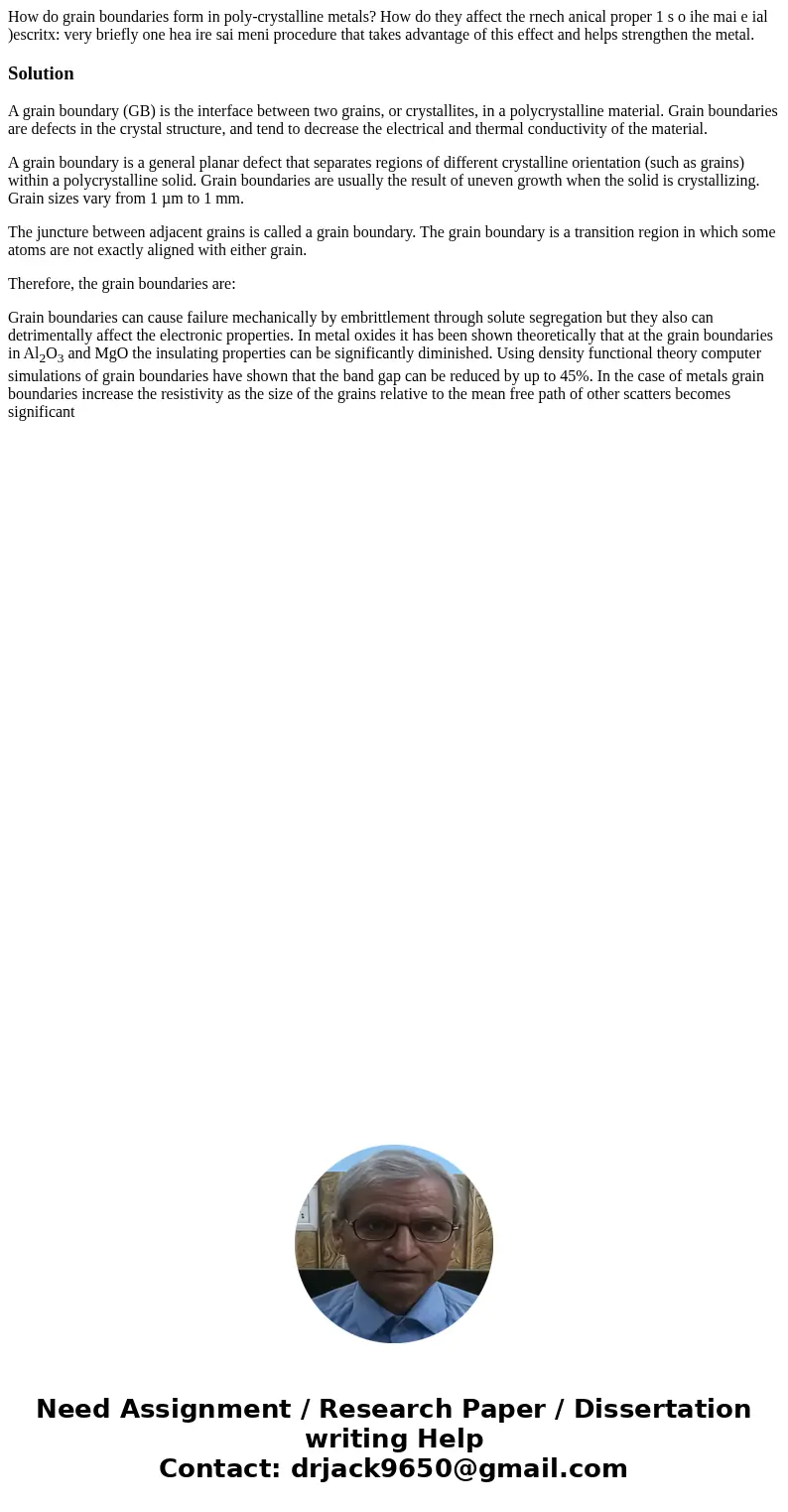How do grain boundaries form in polycrystalline metals How d
Solution
A grain boundary (GB) is the interface between two grains, or crystallites, in a polycrystalline material. Grain boundaries are defects in the crystal structure, and tend to decrease the electrical and thermal conductivity of the material.
A grain boundary is a general planar defect that separates regions of different crystalline orientation (such as grains) within a polycrystalline solid. Grain boundaries are usually the result of uneven growth when the solid is crystallizing. Grain sizes vary from 1 µm to 1 mm.
The juncture between adjacent grains is called a grain boundary. The grain boundary is a transition region in which some atoms are not exactly aligned with either grain.
Therefore, the grain boundaries are:
Grain boundaries can cause failure mechanically by embrittlement through solute segregation but they also can detrimentally affect the electronic properties. In metal oxides it has been shown theoretically that at the grain boundaries in Al2O3 and MgO the insulating properties can be significantly diminished. Using density functional theory computer simulations of grain boundaries have shown that the band gap can be reduced by up to 45%. In the case of metals grain boundaries increase the resistivity as the size of the grains relative to the mean free path of other scatters becomes significant

 Homework Sourse
Homework Sourse